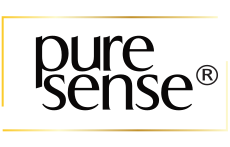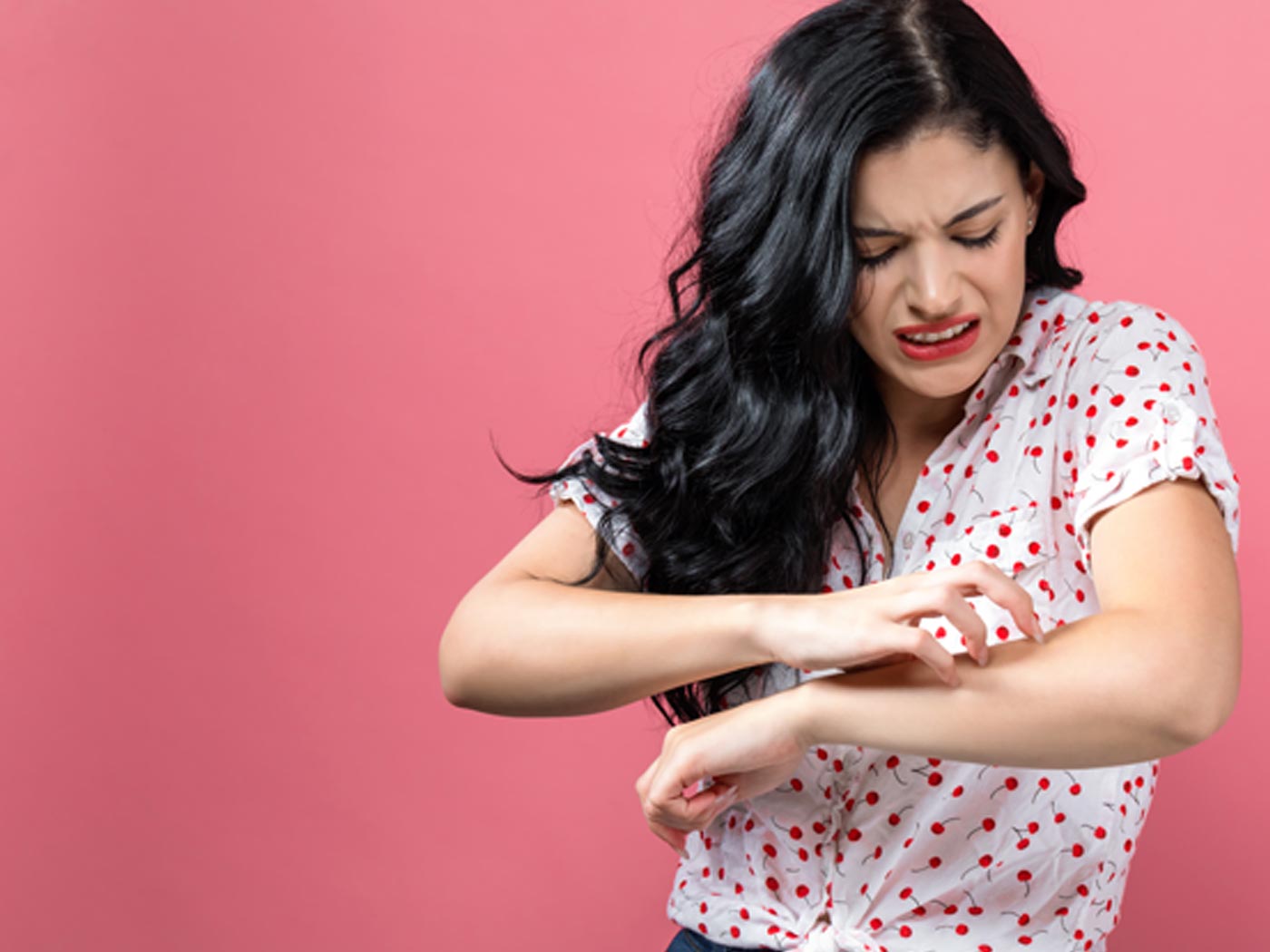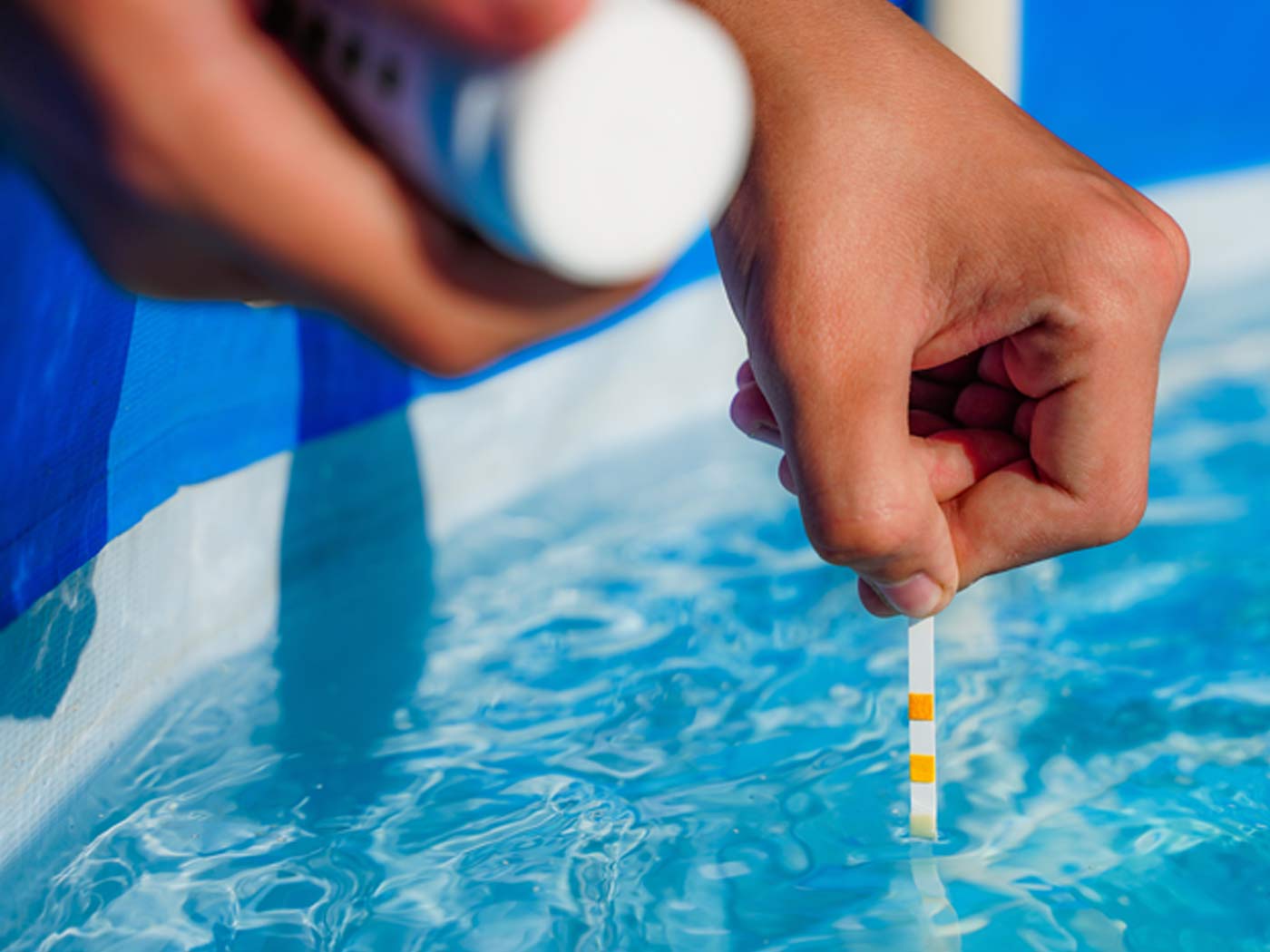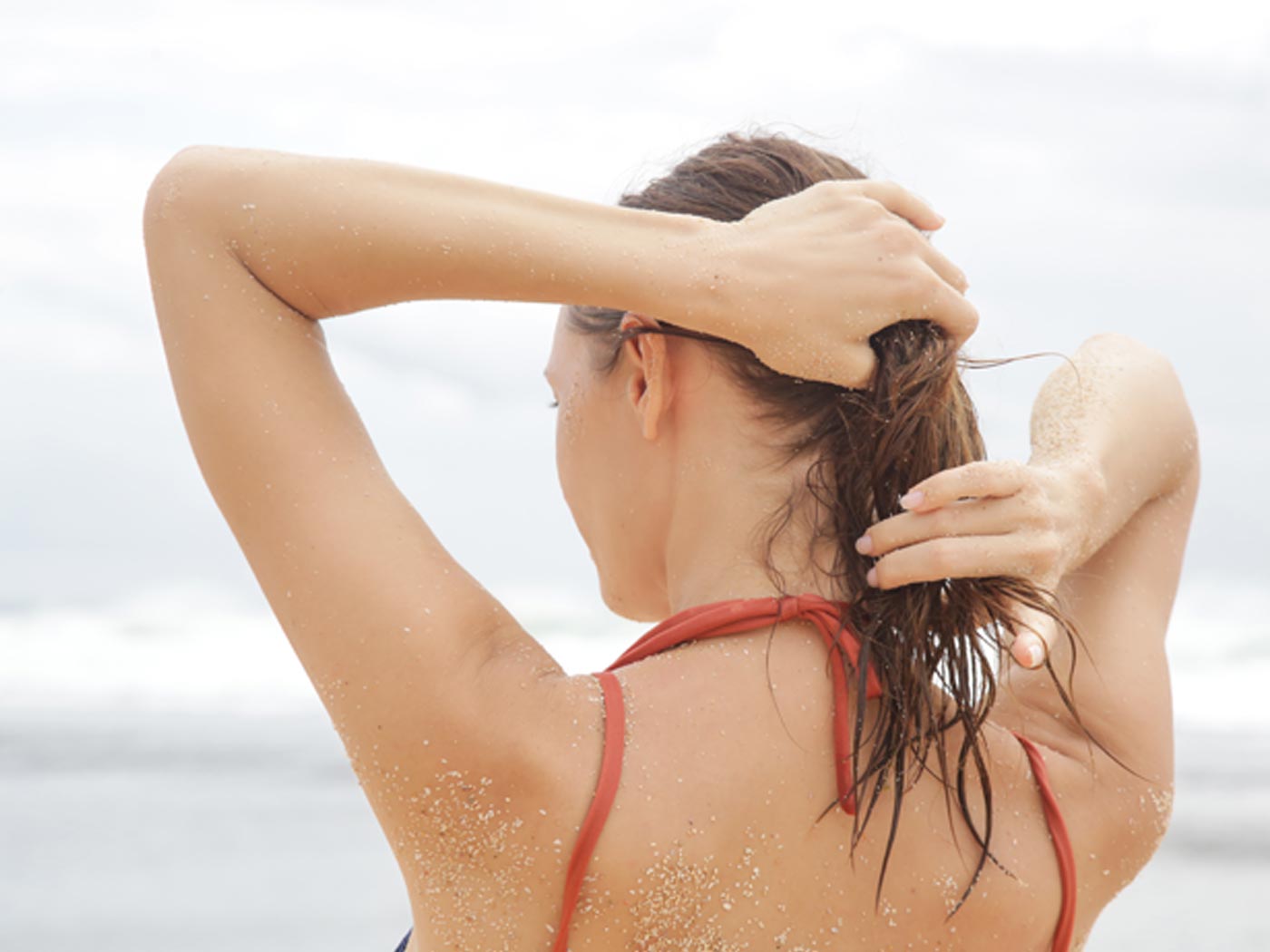
-
What is Heat Rash?
-
Is heat rash due to the sun?
-
What are the symptoms of heat rashes?
-
What Causes Heat Rash?
-
How can I prevent heat rashes on body?
-
When to see a doctor for heat rash on skin?
-
Frequently asked Questions
What is Heat Rash?
Heat rash or prickly heat is the appearance of small papules or pus-filled lesions in the skin due to excess heat. Fundamentally speaking, body rashes due to heat develop when sweat becomes trapped within the deeper layers of the skin due to blockage in the sweat glands, leading to redness, irritation, infection, itching and even severe consequences if itched regularly, causing infection from heat rashes to spread within the skin.
People who are obese, with an abnormally high BMI (body-mass index) and those with a high body fat content, who sweat easily are more likely to get skin rashes in summer. Babies and children whose sweat glands are still in the developmental phase are also prone to developing body rashes due to heat and therefore need a heat rash treatment.
People get heat rashes on the neck, armpits, all over their back, and under the breasts where sweat tends to accumulate more, in the chest, and all around the groin. It mostly occurs due to a lack of hygiene in areas such as the crooks of the elbows and knees, and the waist. In short, wherever there are chances of clothing rubbing against sweaty skin, or there is a possibility of accumulation of sweat due to skin folds, there are chances of the development of heat rashes on skin in those areas.
Is heat rash due to the sun?

Heat rashes largely are dependent on the climate (humidity levels) and the physical state of a human being. Some people have extremely sensitive skin that can develop rashes whenever they step out in direct sunlight. Other sensitive populations include those who are on certain medications like specific antibiotics or undergoing some form of chemical treatment. Some develop body rashes due to heat to unwanted adverse effects of fragrances, dyes, or disinfectants. This phenomenon is known as photodermatitis.
Some people may develop heat rashes on the neck, chest, arms and thighs when they soak up some sun in the late months of spring or early summer. This phenomenon is called polymorphous light eruption (PMLE). It is a less severe form of rashes and can dissolve on its own without medical attention.
Sunlight can also trigger a rare condition called systemic lupus erythematosus (SLE – an auto-immune disorder) in susceptible people. However, you do not always need the sun to give you skin rashes in summer. Nonetheless, the sun may play a role in the developmental phase of these rashes.
What are the symptoms of heat rashes?
The appearance of small bumps or spots, known as papules is the most common heat rash symptom. Other heat rash symptoms include - a constant sensation/ tendency to itch the areas near the spots, which may get uncontrollable beyond a point if left untreated, and mild swelling of the areas where there is a heat rash on the skin.
What Causes Heat Rash in Summer?
Heat rashes in summer predominantly occur when the sweat is trapped inside a sweat gland and does not evaporate easily. This may be caused due to excess friction between the folds of the skin or between the clothing and the skin, which does not let the perspiration evaporate easily. This may or may not be triggered by the sun alone. Here are a few more causes that lead to heat rashes.
- Immature or underdeveloped sweat glands, like those present in babies and children. These underdeveloped glands in children tend to rupture more easily, thereby trapping perspiration beneath the epidermis (outer skin layer) causing heat rashes in summer. On the other hand, in the case of neonates, especially if the baby is being warmed in an incubator, there are chances that the baby will develop heat rashes. There is also a possibility of heat rashes developing if the baby is dressed too warmly or has a fever.
- Tropical climates can lead to excess sweat and perspiration, which may or may not be triggered by the sun alone. This causes heat rash in either case.
- Long stretches of physical activity like engaging in intense exercise, running errands involving hard work or rapid cardiovascular activity, especially in the hot months of the year, can also lead to excess sweat and cause entrapment of sweat in the deeper layers of the skin. This can give you skin rashes in summer too.
- The body temperature increases if you dress in overly warm clothes, sleep for a prolonged duration under an electric blanket, or have a prolonged fever. In case you have sensitive skin, any of these conditions can lead to heat rashes on your body.
Heat rashes are scientifically known as miliaria. There are different types of miliaria depending on the degree and severity of the blockage of sweat glands. The main classifications of heat rashes are listed below:
- Miliaria Crystallina [1]: It is the mildest form of the condition. It generally affects the sweat ducts in the top layer of the skin (epidermis). This form is marked by clear, fluid-filled blisters and bumps (papules) that are often painless and break easily. They are found mainly in the face, folds of the breasts and armpits.
- Miliaria Rubra: It occurs in a layer deeper than the epidermis, and is commonly referred to as prickly heat (a common form of heat rash in summer). The common signs and symptoms for heat rashes of this type include red bumps and the constant urge to itch or prick around the affected area.
- Miliaria Pustulosa: It is a level higher than miliaria rubra and happens when the papules of miliaria rubra become inflamed and pustular.
Miliaria Profunda: It is the most uncommon form of this condition, affecting the dermis, a deeper layer of skin. Often, sweat retained in the sweat glands leaks out into the skin, causing firm, fresh lesions that resemble goosebumps.
How can I prevent heat rashes on body?

On Body
Do not panic if you see a few body rashes due to heat and face during the summer months. However, You can follow some basic tips to ensure that you get fewer heat rashes on your skin this summer:
Avoid working out in the open, especially in the afternoon, in places with less ventilation; the best time to workout can be early mornings or late evenings when the sun is not there.
Be in the proximity of a fan or an air-conditioner (albeit judiciously) when engaging in high-intensity cardiovascular activities or training.
Wearing light clothing made from natural fibres, such as cotton instead of synthetic, body-hugging clothing can help you sweat less or even cause the sweat to evaporate faster.
Take frequent showers and wash your face with a gentle cleanser to keep sweat at bay. Apply a lightweight moisturiser and ensure the pores of the skin do not clog.
If you have a high body mass index or are overweight, engage in following a healthy diet and include a certain amount of fitness training to reduce obesity; it not only reduces chances of your body heating up from within due to the high-fat content, but it also makes you more confident and reduces sweating.
Follow these steps and you will not have to seek remedies for heat rashes anymore.
On Face
To avoid the uncomfortable and painful heat rash on face, you can follow these steps:
- Stay in a cool and dry environment: Heat rash is usually caused by sweat that gets trapped on the skin. Avoid staying in hot and humid environments as much as possible, and use air conditioning or fans to keep the air cool and dry.
- Wear a hat or visor: Wearing a hat or visor can provide shade and help keep the sun off your face, reducing the risk of heat rash.
- Use a gentle cleanser: Use a gentle cleanser to wash your face and remove sweat and dirt that can clog pores and lead to heat rash. Avoid using harsh soaps or scrubs that can irritate the skin.
- Use lightweight and non-comedogenic moisturisers: Heavy or oily moisturisers can block pores and trap sweat, leading to heat rash. Use lightweight, non-comedogenic moisturisers specifically designed for the face to keep your skin hydrated.
- Use a broad-spectrum sunscreen: Use a broad-spectrum sunscreen with a high SPF to protect your skin from the sun and reduce the risk of heat rash.
- Keep your face dry: Use a soft towel or cloth to dab your face and keep it dry throughout the day. Avoid rubbing your face vigorously as this can irritate the skin and worsen the rash.
- Stay hydrated: Drink plenty of water to help regulate your body temperature and prevent excessive sweating.
On Arms:
Preventing heat rash on the arms can be achieved by taking several simple steps. Wearing loose-fitting, lightweight clothing made of natural fibres such as cotton or linen can help to keep the skin cool and reduce the risk of heat rash. Staying in a cool and dry environment, using talcum powder or cornstarch to absorb moisture, and taking cool showers can also help to prevent heat rash from developing.
To keep the skin dry, it is important to dab it with a soft towel or cloth throughout the day, rather than rubbing it vigorously. Drinking plenty of water to stay hydrated can also help to regulate body temperature and prevent excessive sweating. It is best to avoid heavy lotions or creams, as these can block pores and trap sweat, which can lead to heat rash. If heat rash does develop, it is important to keep the affected area clean and dry, and to avoid scratching or picking at the rash to prevent infection.
On Neck:
Heat rash on the neck, also known as prickly heat, can be uncomfortable and itchy. Here are some tips to prevent heat rash on the neck:
- Stay in a cool and dry environment: Heat rash is usually caused by sweat that gets trapped on the skin. Avoid staying in hot and humid environments as much as possible, and use air conditioning or fans to keep the air cool and dry.
- Wear loose-fitting and breathable clothing: Tight-fitting clothes can trap heat and sweat on the skin, causing heat rash. Choose loose-fitting, breathable clothes made of natural fibres such as cotton or linen to help keep you cool.
- Keep your neck dry: Use a soft towel or cloth to dab your neck and keep it dry throughout the day. Avoid rubbing your neck vigorously as this can irritate the skin and worsen the rash.
- Use talcum powder or cornstarch: Apply talcum powder or cornstarch to your neck to help absorb moisture and reduce friction. This can help prevent heat rash from developing.
- Stay hydrated: Drink plenty of water to help regulate your body temperature and prevent excessive sweating.
- Take cool showers: Take cool showers or use a cold compress to cool down your body and reduce sweating.
- Avoid using heavy lotions or creams: Heavy lotions or creams can block pores and trap sweat, leading to heat rash. Use lighter moisturisers that are specifically designed for sensitive skin.
If you develop heat rash despite these preventative measures, it is important to keep the affected area clean and dry. Avoid scratching or picking at the rash, as this can lead to infection.
When to see a doctor for heat rash on skin?
Heat rashes on skin normally subside on their own. However, you need to pay attention if any symptom lingers for a prolonged time and starts affecting your daily life activities. Some common complications are listed below:
- Increased pain, swelling, redness or warmth around the affected area
- Increased pus formation in the papules and non-stop drainage of pus
- Swollen lymph nodes in the armpits, in the neck region or the groin
- Infected papules or pustules leading to fever or any movement disability
If such symptoms occur, seek heat rash treatment without delay.
Keep yourself clean and cool using our range of natural, organic products:
Rejuvenating Grapefruit Revitalising Face Cleansing Gel:
This face wash gel is specially designed for sensitive skin to keep all skin problems at bay. This natural formula free from parabens, sulphates, carcinogens and cruelty-free is gentle on the skin and keeps it hydrated and rejuvenated after a single round of cleansing. It is enriched with vitamin C rich grapefruit extracts that transform dull complexion, leaving the skin supple and radiant. It also boosts collagen production while rejuvenating your senses, thanks to the organic composition.
Conclusion
Heat rashes can be irritating and may cause stress initially. However, always remember to maintain a healthy, hygienic regimen and not pay much attention to the itching or prickling sensations. The more you itch or prick them the more time they take to dissolve. Also, resort to using natural products, to ensure your skin breathes and remains healthy through the summer months. You can find a range of natural products to go for happy and healthy skin.
Frequently asked Questions on heat rashes in summer
-
What is the treatment for heat rashes?
In normal circumstances, you will not need to do anything specific for heat rash treatment. They take their own time to wear away. As long as you keep yourself cool and take adequate showers, maintain personal hygiene and take plenty of fluids, you should be good to go!
-
What are the remedies for heat rashes in summer?
The best heat rash remedy in summer is to include plenty of water-rich foods in your diet. Hydration is the key to every problem – and this is no different, especially in summer. Also, try to reduce your meat intake in summer, as meats, especially red meat tends to increase your body temperature and cause more heat. Sticking to smaller portions and leaner sources of protein in summer will also help maintain a suitable body temperature and prevent any form of overheating within the body. Avoiding body-hugging clothing is another sustainable heat rash remedy. Synthetic and tight clothing also makes you sweat more in summer and wearing loose, breathable, cotton clothing is another key that will help you stay cool during the summer months.
-
Why do I get heat rash in summer?
You probably have sensitive skin and sweat a lot in summer, which makes more sweat stick onto your skin and clothes. If you are involved in intense exercises and wear sweaty clothes for a longer period even after your workout session is over, you are more likely to get these rashes. You may also be living in tropical parts of the country with a more humid climate, which makes you sweat more in summer. However, the treatment of heat rashes is easy and painless.







